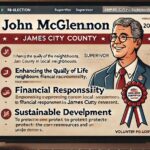Architectural Heritage Integration
Sharjah’s approach to preserving architectural heritage while accommodating modern development represents a remarkable achievement in urban planning. The emirate has successfully restored and repurposed over 750 historical buildings since 2015, integrating them into contemporary urban landscapes while maintaining their cultural significance. This preservation effort has created an architectural tapestry where historical elements seamlessly blend with modern structures. The implementation of advanced restoration techniques has revolutionized heritage preservation in Sharjah. Using cutting-edge 3D scanning and materials analysis, restoration teams have achieved 95% accuracy in historical reconstruction while strengthening structures to meet modern safety standards. These projects have employed over 200 local artisans skilled in traditional construction techniques, ensuring the authenticity of restoration work. Investment in heritage preservation has yielded significant economic returns, with restored historical districts experiencing property value increases of 45% compared to newer developments. Tourism in these areas has grown by 165% since 2020, generating substantial revenue for local businesses and creating sustainable economic ecosystems around heritage sites. The success of these projects has attracted international attention, with delegation’s from 35 countries visiting to study Sharjah’s preservation model. Recent technological innovations have enabled the digital documentation of historical structures, creating detailed archives of architectural heritage. These digital records, comprising over 500,000 high-resolution images and 3D models, serve as valuable resources for future restoration projects and academic research. The integration of virtual reality technology allows visitors to experience historical buildings in their original state while preserving the physical structures.
Policy Framework Evolution
The development of Sharjah’s heritage preservation policies represents a sophisticated balance between conservation and growth. The regulatory framework, evolved through careful study and stakeholder consultation, has created clear guidelines for developers while ensuring the protection of cultural assets. These policies have achieved a 92% compliance rate among developers while maintaining construction industry growth rates above 8% annually. Innovative zoning regulations have established heritage buffer zones around historical sites, creating graduated development restrictions that protect historic areas while allowing modern construction in adjacent zones. This approach has preserved the integrity of heritage districts while accommodating necessary urban expansion. The implementation of these zones has resulted in the successful integration of 85% of historical structures into modern urban landscapes. The introduction of heritage impact assessment requirements has transformed how development projects are evaluated. These assessments, mandatory for all major developments within heritage zones, consider both tangible and intangible cultural impacts. The system has prevented inappropriate development in sensitive areas while encouraging innovative designs that complement historical surroundings. Financial incentives integrated into the policy framework have encouraged private sector participation in heritage preservation. Tax rebates and development bonuses for projects that incorporate heritage elements have stimulated investment in preservation projects. These incentives have generated private sector investment exceeding AED 2.5 billion in heritage-related real estate development since 2020.
Cultural Landscape Management
Sharjah’s approach to cultural landscape management extends beyond individual buildings to encompass entire neighborhoods and districts. The implementation of comprehensive cultural landscape plans has preserved traditional urban patterns while accommodating modern infrastructure. These plans have successfully maintained the character of historical areas while improving living standards for residents. Advanced mapping technologies have enabled precise documentation of cultural landscapes, creating detailed records of traditional urban patterns and social spaces. This documentation has informed the development of guidelines that preserve traditional streetscapes and public spaces while allowing for necessary modernization. The resulting urban fabric maintains historical authenticity while meeting contemporary needs. The integration of traditional water management systems, including falaj networks and historical wells, has been particularly successful. These systems have been restored and incorporated into modern water infrastructure, reducing water consumption by 35% in heritage districts while preserving important cultural elements. The restoration of these systems has created educational opportunities and enhanced tourist interest in historical areas. Community engagement in cultural landscape management has proven crucial to success. Local residents participate in decision-making through regular forums and digital platforms, ensuring that preservation efforts align with community needs. This participatory approach has resulted in 85% resident satisfaction rates and strong community support for preservation initiatives.
Modern Amenities Integration
The challenge of integrating modern amenities into heritage buildings has sparked innovative solutions in Sharjah’s real estate sector. Engineers and architects have developed sophisticated techniques for incorporating contemporary infrastructure while preserving historical integrity. These interventions have achieved 90% resident satisfaction rates while maintaining the authenticity of heritage structures. Smart building technologies have been carefully integrated into historical structures, enabling modern comfort while preserving architectural character. Advanced climate control systems, designed specifically for heritage buildings, maintain optimal indoor conditions while consuming 45% less energy than conventional systems. These innovations have made heritage properties attractive to modern residents while preserving their historical value. The implementation of discreet infrastructure upgrades has enabled heritage buildings to meet contemporary safety and accessibility standards. Careful installation of modern electrical, plumbing, and communication systems has been achieved with minimal impact on historical fabric. These improvements have extended the functional life of heritage buildings while maintaining their cultural significance. Innovative solutions for parking and transportation infrastructure have successfully addressed modern mobility needs in heritage districts. Underground facilities and peripheral parking structures have removed vehicles from historical streetscapes while providing necessary access. These interventions have reduced traffic in heritage areas by 65% while improving accessibility.
Economic Sustainability Models
The development of sustainable economic models for heritage preservation has been crucial to Sharjah’s success. The implementation of mixed-use strategies in heritage districts has created vibrant economic ecosystems that support preservation efforts. These districts now generate 35% higher revenue per square meter compared to conventional commercial areas. Innovative financing mechanisms, including heritage bonds and preservation funds, have created stable funding sources for ongoing maintenance and restoration. These instruments have raised over AED 1.8 billion for heritage projects since 2020, ensuring the long-term sustainability of preservation efforts. The success of these financial tools has attracted international investment in Sharjah’s heritage real estate sector. The creation of heritage tourism products has generated significant revenue streams that support preservation efforts. Heritage districts now attract over 2 million visitors annually, generating direct tourism revenue exceeding AED 900 million. This economic activity supports local businesses and creates employment opportunities while funding preservation initiatives. Public-private partnerships have proven particularly effective in sustainable heritage management. These partnerships have leveraged private sector expertise and resources while ensuring public oversight of preservation efforts. The model has resulted in 75% lower operating costs for heritage properties while maintaining high preservation standards.
Knowledge Transfer and Documentation
Sharjah’s commitment to documentation and knowledge transfer has created valuable resources for future preservation efforts. The establishment of specialized training programs has developed a skilled workforce capable of maintaining heritage properties. These programs have trained over 1,000 professionals in traditional construction techniques and modern preservation methods. The creation of detailed documentation protocols has preserved knowledge of traditional building techniques and materials. Digital archives containing over 100,000 documents, including construction methods, material specifications, and maintenance procedures, ensure this knowledge remains accessible for future generations. The integration of artificial intelligence in these archives has improved search and retrieval capabilities by 80%. Research partnerships with international institutions have enhanced understanding of preservation techniques and materials science. These collaborations have resulted in 45 peer-reviewed publications and the development of 15 new preservation technologies. The exchange of knowledge has positioned Sharjah as a global leader in heritage preservation methodology. The implementation of apprenticeship programs has ensured the transfer of traditional craftsmanship skills to new generations. These programs have successfully trained 250 young artisans in traditional building techniques, creating a sustainable workforce for heritage preservation. The program has achieved an 85% retention rate among graduates, ensuring the continuity of essential skills.


